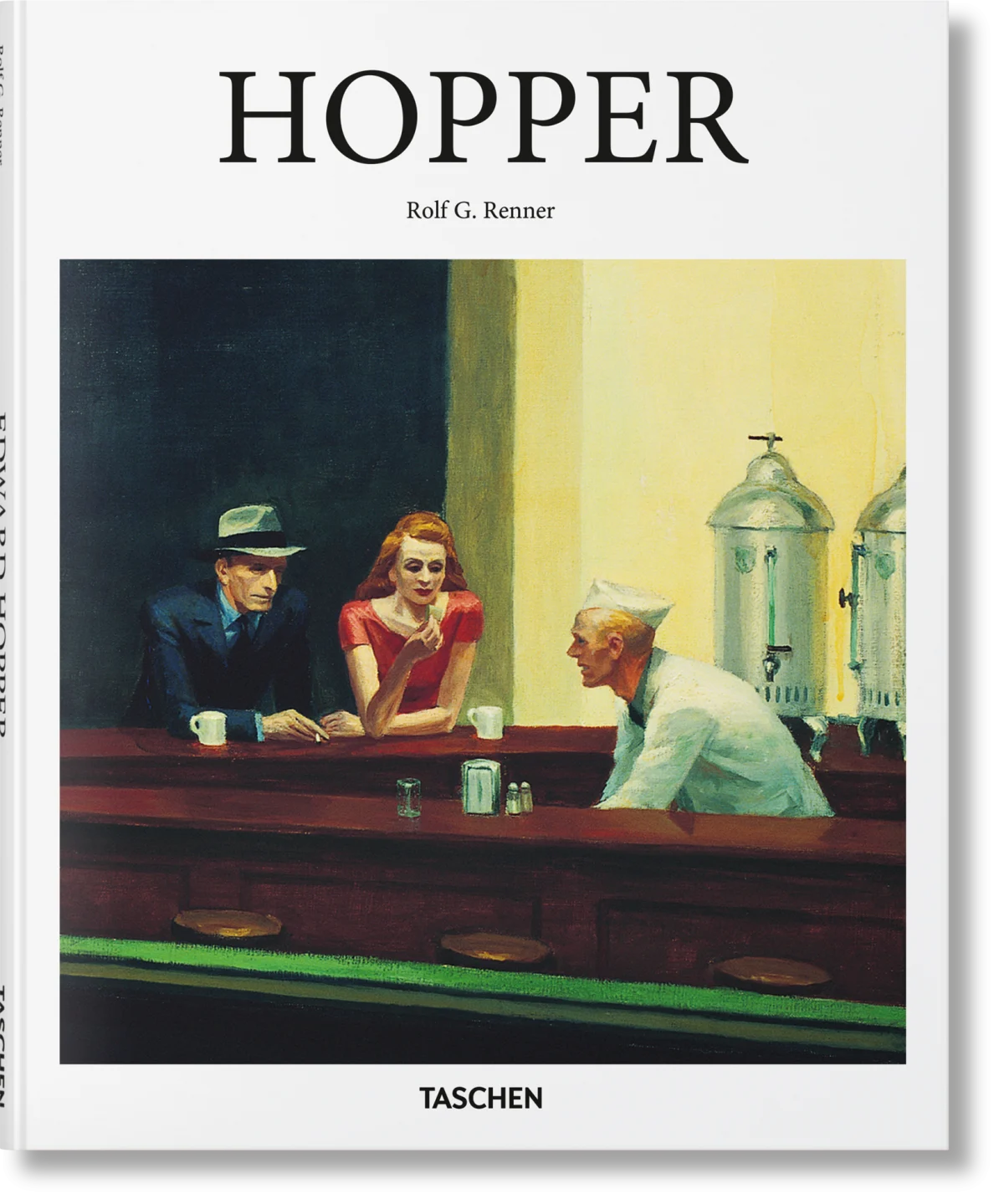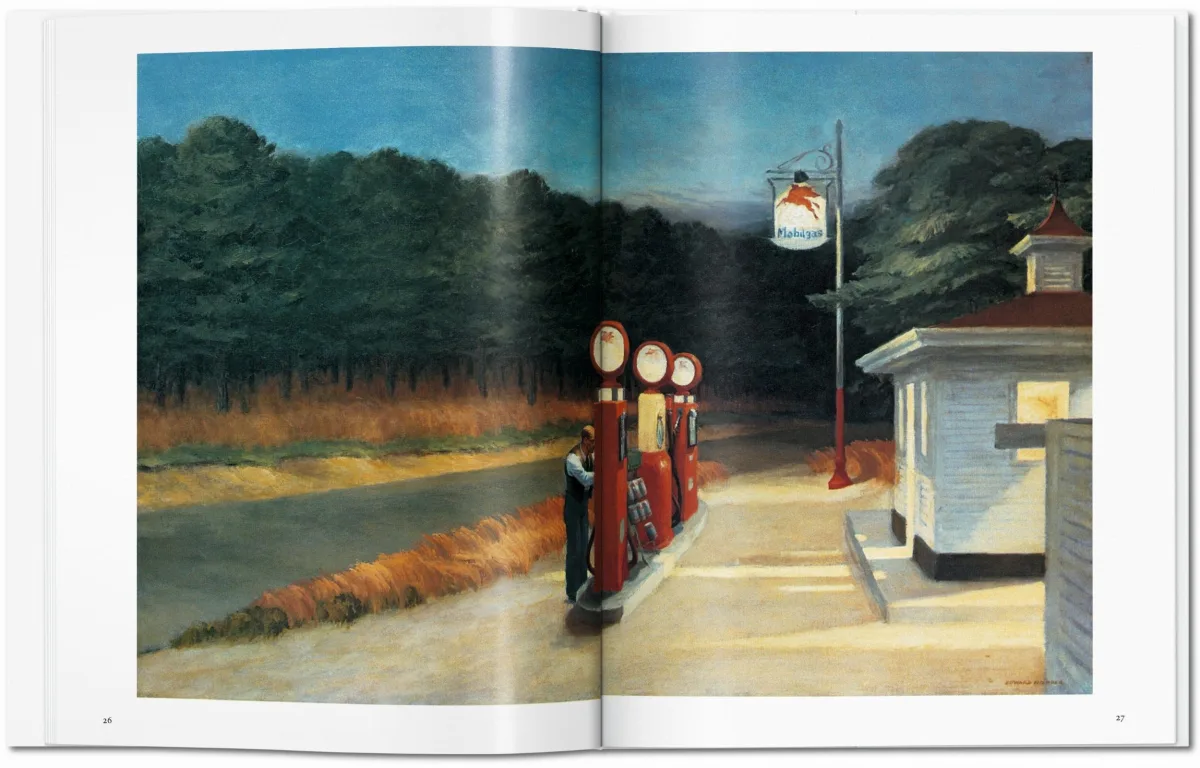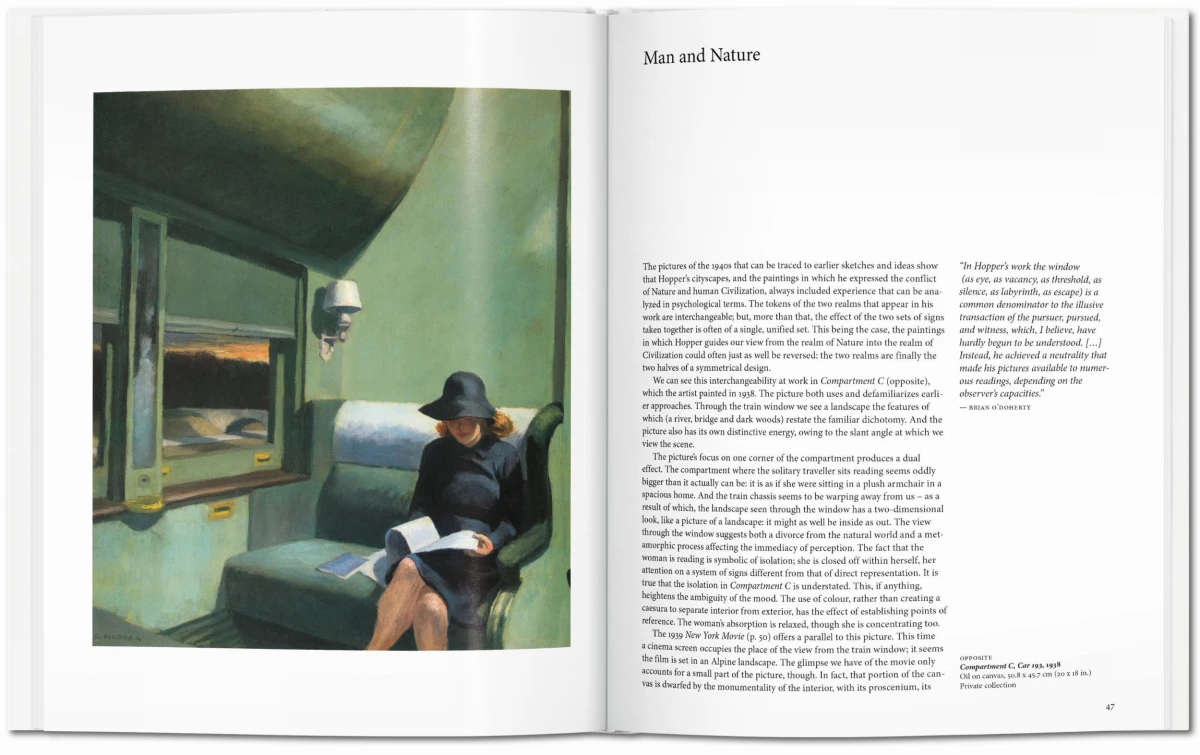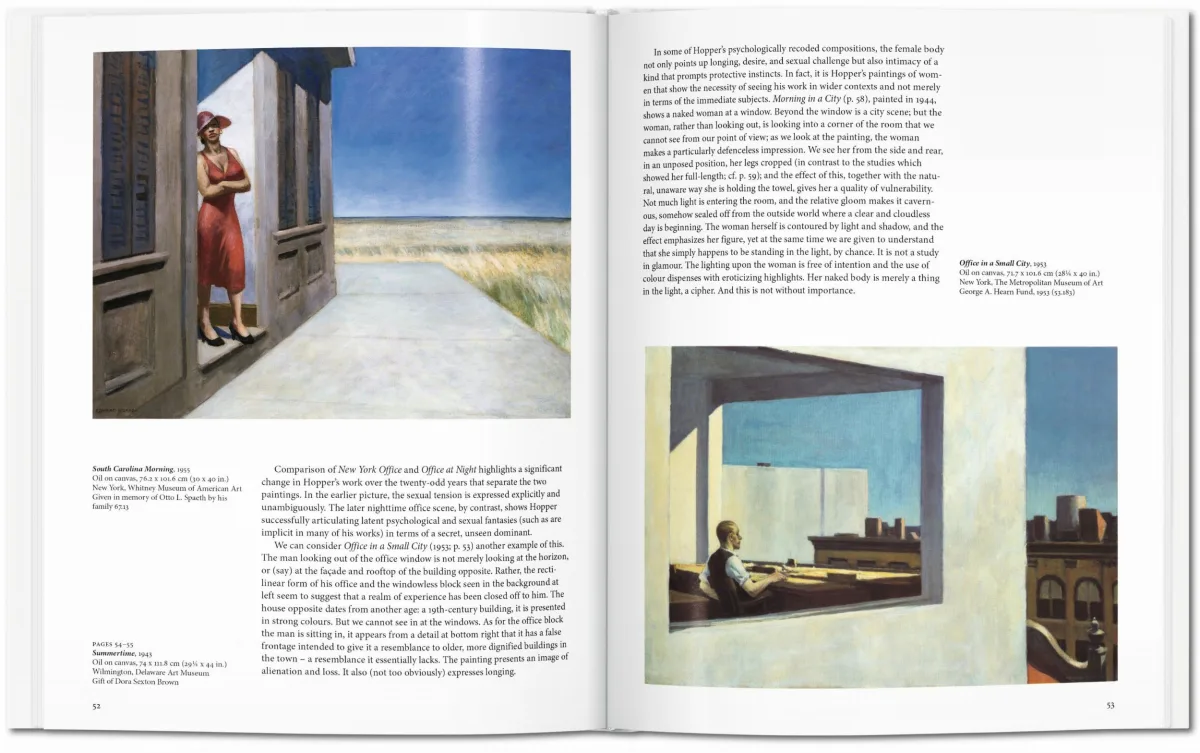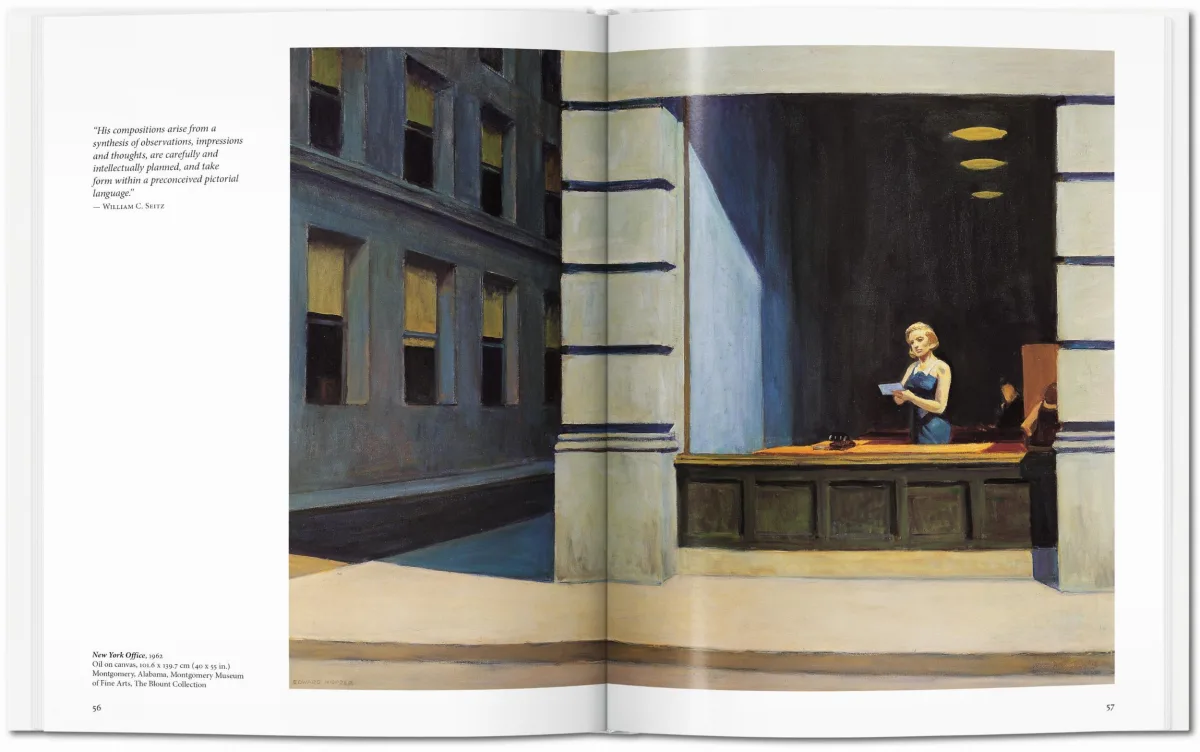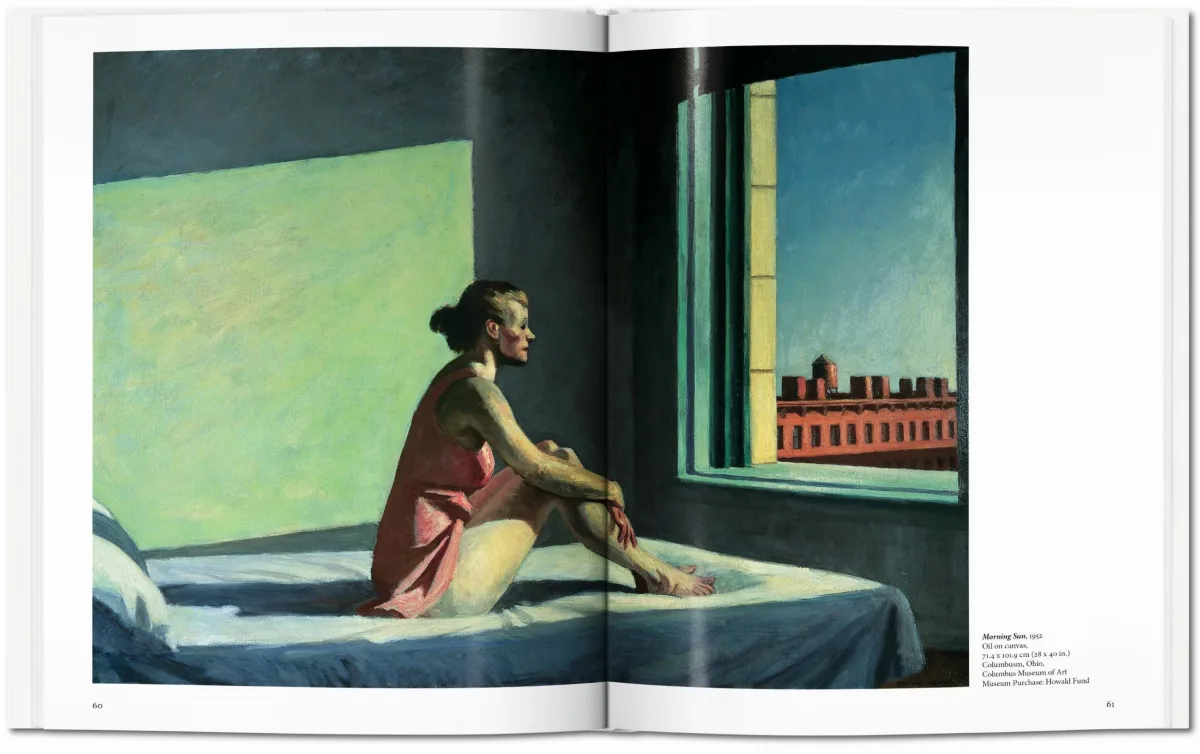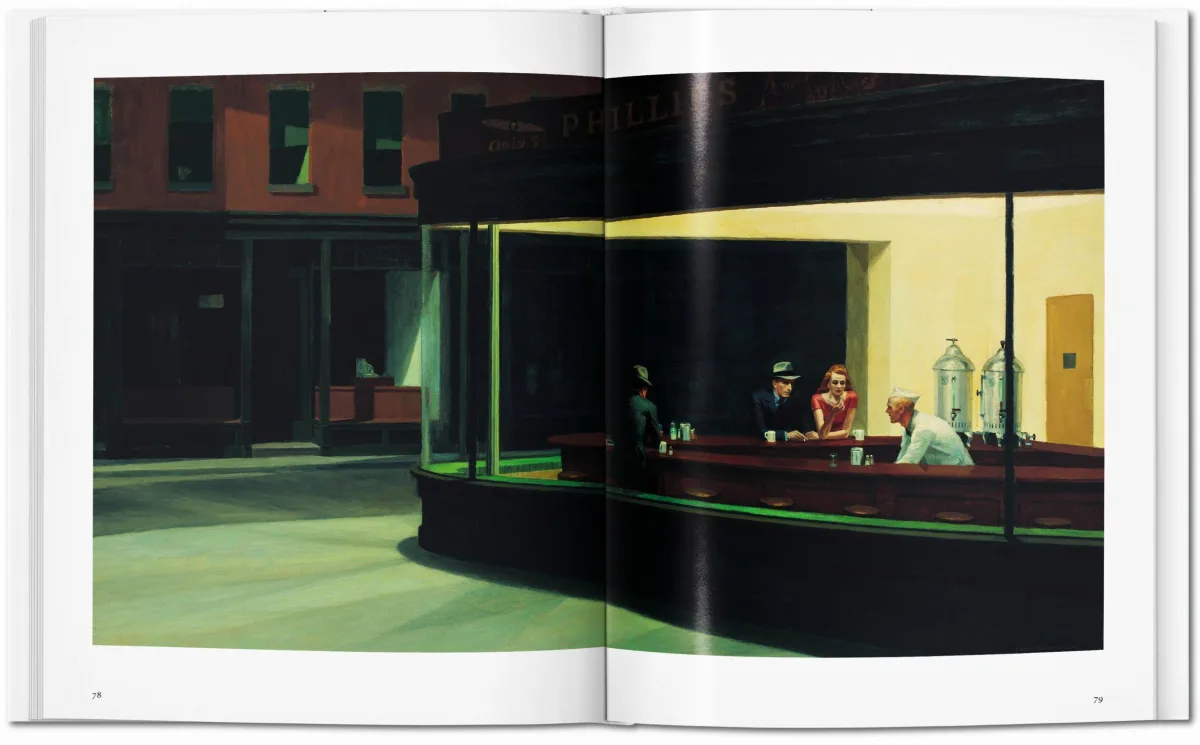1 / 7
Hopper
20
Struggling artist turned icon of the modern, urban experience, Edward Hopper is most famed for his haunting nocturnal diner scene Nighthawks. This book introduces his mastery of place, mood, and melancholy through vivid color juxtapositions; stark, theatrical lighting; as well as harshly contoured figures, at once part of, and alien to, their surroundings.
Hardcover, 8.3 x 10.2 in., 1.40 lb, 96 pages

Hopper
20Lonely Arts
A distinct eye for alienation
Edward Hopper (1882–1967) is something of an American success story, if only his success had come swifter. At the age of 40, he was a failing artist who struggled to sell a single painting. As he approached 80, Time magazine featured him on its cover. Today, Hopper is considered a giant of modern expression, with an uncanny, unforgettable, and utterly distinct sense for mood and place.
Much of Hopper's work excavates modern city experience. In canvas after canvas, he depicts diners, cafes, shopfronts, street lights, gas stations, rail stations, and hotel rooms. The scenes are marked by vivid color juxtapositions and stark, theatrical lighting, as well as by harshly contoured figures, who appear at once part of, and alien to, their surroundings. The ambiance throughout his repertoire is of an eerie disquiet, alienation, loneliness and psychological tension, although his rural or coastal scenes can offer a counterpoint of tranquility or optimism.
This book presents major works from Hopper's œuvre to introduce a key player not only in American art history but also in the American psyche.
Much of Hopper's work excavates modern city experience. In canvas after canvas, he depicts diners, cafes, shopfronts, street lights, gas stations, rail stations, and hotel rooms. The scenes are marked by vivid color juxtapositions and stark, theatrical lighting, as well as by harshly contoured figures, who appear at once part of, and alien to, their surroundings. The ambiance throughout his repertoire is of an eerie disquiet, alienation, loneliness and psychological tension, although his rural or coastal scenes can offer a counterpoint of tranquility or optimism.
This book presents major works from Hopper's œuvre to introduce a key player not only in American art history but also in the American psyche.
The author
Rolf G. Renner, born in 1945, earned his doctorate in 1976, and has taught at the universities of Göttingen and Munich (Germany), Charlottesville (Virginia), and Columbia (New York). Since 1988, he has served as professor at the University of Freiburg in Germany. Numerous of his articles have appeared in various magazines and journals.
Hopper
Hardcover, 21 x 26 cm, 0.64 kg, 96 pagesISBN 978-3-8365-0033-3
Edition: EnglishDownload product images here
Born back in 1985, the Basic Art Series has evolved into the best-selling art book collection ever published. Each book in TASCHEN’s Basic Art series features:
• a detailed chronological summary of the life and oeuvre of the artist, covering his or her cultural and historical importance
• a concise biography
• approximately 100 illustrations with explanatory captions
4.8
Beau livre
December 22, 2021
Donne un bon aperçu de l'œuvre de Hopper. La biographie est facile à lire. Livre fidèle à la tradition de Taschen.Imprescindible.
December 17, 2021
Edward Hopper es un artista del que siempre he querido aprender y este libro de la serie Basic Art es la mezcla perfecta entre la vida del autor y un vistazo a su obra. Además me encanta el formato del libro. 100% recomendado.An inexpensive book giving access to a great classic
November 1, 2021
I like the fact this book is just the right size, not too big/thick, and gives a very good overview of Hopper's work.Klassiker
October 29, 2021
Die weiße Reihe in Bestform. Informativ, ansprechend, anregend.Lost in Hopper's Paints
October 28, 2021
Hopper doesn't need a review. Just look at his paints and get lost in his loneliness.Nice read
October 28, 2021
Good way to get to know the work of Hopper.
